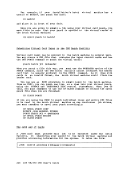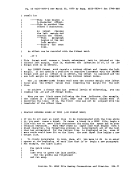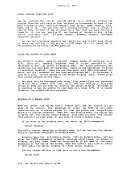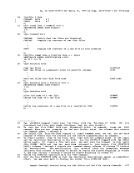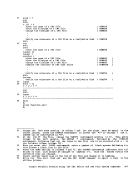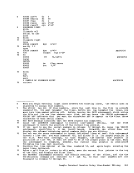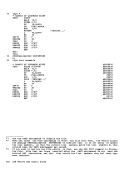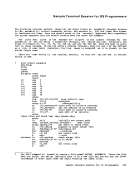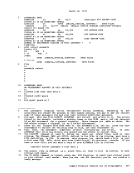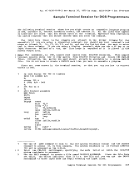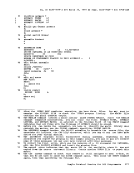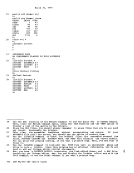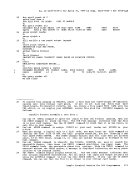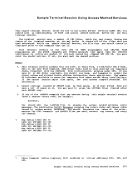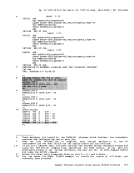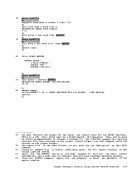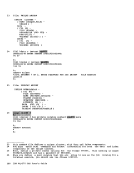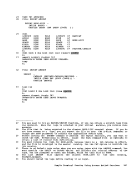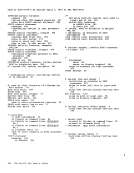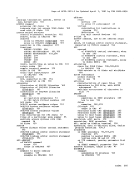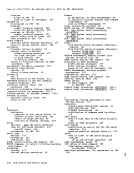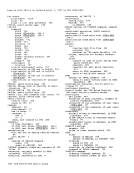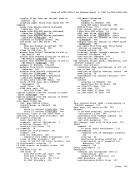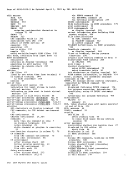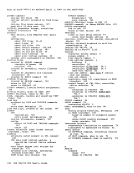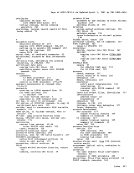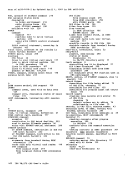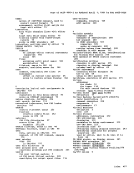Pg. of GC20-1819-2 Rev March 30, 1979 by Supp. S[23-9024-1 for 5748-XX8 processed. Fer processing multifile volumes, you may wish to use the LEAVE option on the FILEDEF command. This option prevents a tape from being rewound and positioned before each tape file is processed. The LEAVE option does not exist on an as DD statement.
For input files, HDR2 andEOF2 labels are skipped. There is no merge
of informationfrom a HDR2 label with information in the DCB as there is
under anOS/VS operating system. Output HDR2/EOF2 records are written
from information in the DCB and theCMSCB (FCBSECT). Note that the tape density and TRTCH fields in HDR2/EOF2 records are taken from wbat the
user specifies in his FILEDEF command for the tape file. They may net
correspond to the actual density and TRTCH fields used to write the
tape.
To process standard user labels in as simulation, you must do the
following:1. Specify the file as SUL in a FILEDEF command.
2. Provide a routine to process the user standard labels in yourprogram. 3. Put the address of the user label routine in the DCB EXIT list of
the DCB for the file.See the IBM publication EXIT list, and the-;xact linkage for communication between user label routines and
the operating system. This exact linkage shouldte used under CMS with the following exceptions:
a. There is no support for codex'06' EOV EXIT routine.
b. For input labels, return codes 8 and 12 from the user routine
are not supported. If an input returncode is not 0, it is
treated as if it were 4.
4. Note that your standard user label routines do not perform any
input/output. They set up an output label for writing, but theCMS tape label processing routines actually write out the label. For
input, theCMS label processing routines read in your user standard
label but then give control to your routine to check the lahel.You should specify NL in the FILEDEF command when you expect a tape does
not contain anyIBM standard tape labels. CMS reads your tape at the
time a file is opened and does not open the file if the tape contains aVaLl label as its first record. If the tape does not contain a VOL1 label, a file is opened and the tape is positioned by using the position
parameter (n). For example, if you specify:
filedef fileq tap1nl 2
fileq is not opened if the tape on tap1 (181) has aVOLl label. If the
tape does not have aVaLl label, fileq is opened and the tape is
positioned at the second file. If you do not specify a position
parameter, the tape is positioned at the first file, (that is, the load
point).
122.2IBM VM/370 eMS User's Guide
For input files, HDR2 and
of information
under an
from information in the DCB and the
user specifies in his FILEDEF command for the tape file. They may net
correspond to the actual density and TRTCH fields used to write the
tape.
To process standard user labels in as simulation, you must do the
following:
2. Provide a routine to process the user standard labels in your
the DCB for the file.
the operating system. This exact linkage should
a. There is no support for code
b. For input labels, return codes 8 and 12 from the user routine
are not supported. If an input return
treated as if it were 4.
4. Note that your standard user label routines do not perform any
input/output. They set up an output label for writing, but the
input, the
label but then give control to your routine to check the lahel.
not contain any
time a file is opened and does not open the file if the tape contains a
parameter (n). For example, if you specify:
filedef fileq tap1
fileq is not opened if the tape on tap1 (181) has a
tape does not have a
positioned at the second file. If you do not specify a position
parameter, the tape is positioned at the first file, (that is, the load
point).
122.2

































































































































































































































































































